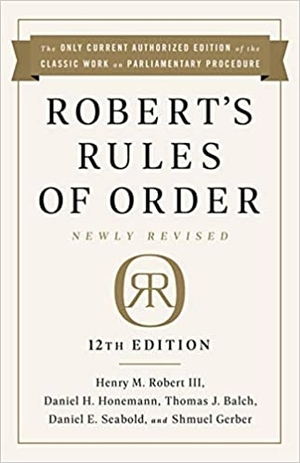

What is a “friendly amendment” in Robert’s Rules of Order and parliamentary procedure? This term is frequently misused. Here is our explanation:
(1) An amendment is a proposal to change a motion – a proposed action – being considered by a group.
(2) Sometimes people suggest amendments with the intention of making the original motion ineffective, or defeating its purpose. These are hostile amendments, offered with negative intent.
(3) Sometimes people suggest amendments that they sincerely believe will improve the original motion. These are friendly amendments, offered with positive intent.
(4) An unfortunate custom has arisen whereby when a person suggests a “friendly amendment,” the presider often turns to the maker of the motion to ask him if he would accept the amendment. If he agrees, the presider sometimes also asks the seconder if she would accept the amendment.
(5) This is wrong!
(6) Once a motion has been made, seconded, and stated by the chair, it belongs to the group as a whole, not to the individual who first proposed it. It is the group as a whole that must accept or reject any proposed amendment, whatever the intent of the proposer. The maker of the motion, and the seconder, have the same rights as the other members of the group – no more and no less.
(7) When someone offers a friendly amendment, we suggest that the presider say, “A friendly amendment is handled just like any other amendment. Is there a second?” This language doesn’t make people feel stupid, but sets the group in the right procedural path.
(8) If the presider turns to the original maker of the motion to ask if he approves of the proposed change, any member can say “point of order.” This stops the action. The member can then explain the error.
Robert’s Rules of Order Newly Revised, 12 th edition, the most widely accepted authority on parliamentary procedure, offers a clear discussion of this issue in Section 12:91, “Friendly Amendments.”